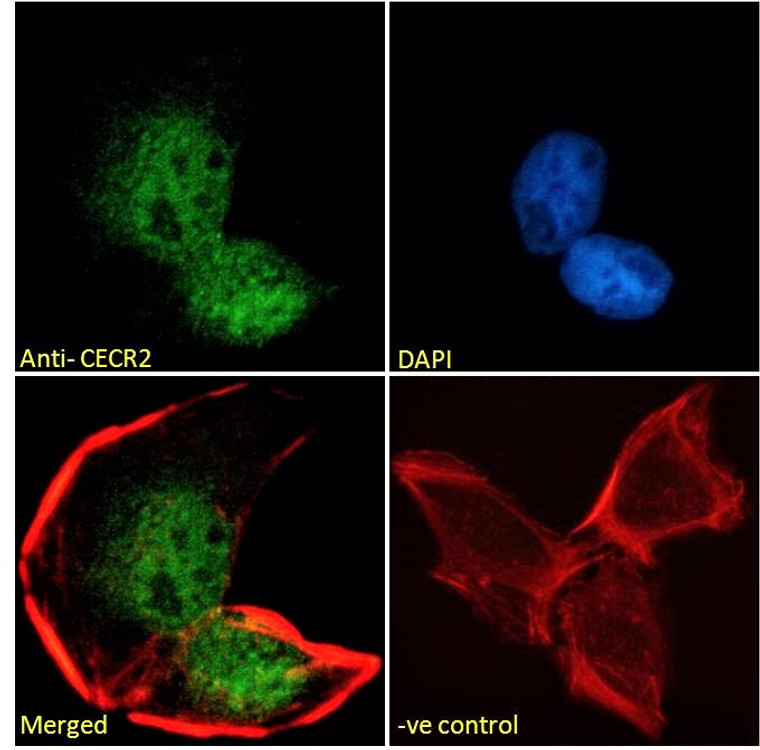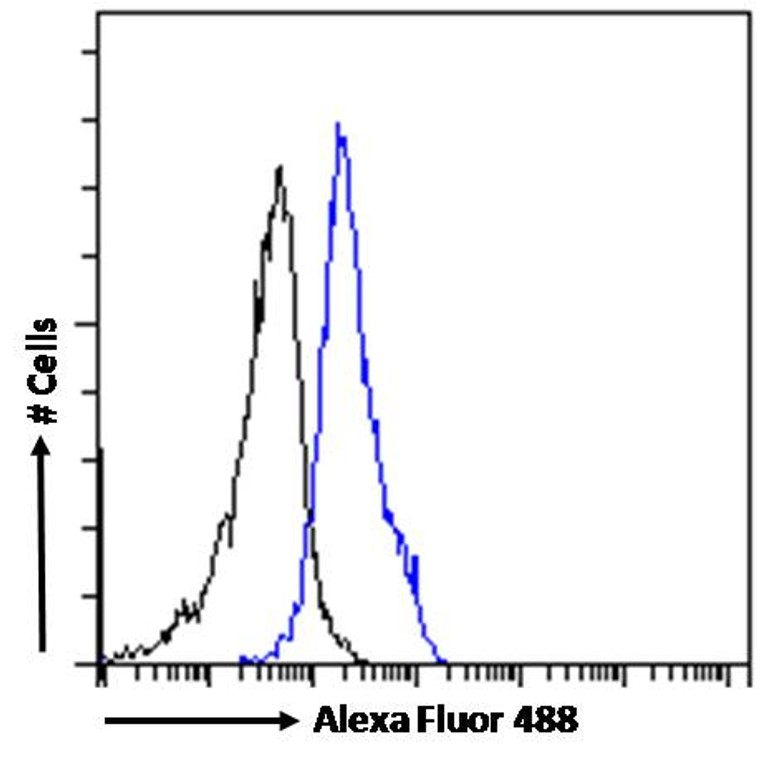| Host: |
Goat |
| Applications: |
Pep-ELISA/IF/FC |
| Reactivity: |
Human/Dog |
| Note: |
STRICTLY FOR FURTHER SCIENTIFIC RESEARCH USE ONLY (RUO). MUST NOT TO BE USED IN DIAGNOSTIC OR THERAPEUTIC APPLICATIONS. |
| Short Description: |
Goat polyclonal antibody anti-CECR2 (C-Term) is suitable for use in ELISA, Immunofluorescence and Flow Cytometry research applications. |
| Clonality: |
Polyclonal |
| Conjugation: |
Unconjugated |
| Isotype: |
IgG |
| Formulation: |
0.5 mg/ml in Tris saline, 0.02% sodium azide, pH7.3 with 0.5% bovine serum albumin. NA |
| Purification: |
Purified from goat serum by ammonium sulphate precipitation followed by antigen affinity chromatography using the immunizing peptide. |
| Concentration: |
0.5 mg/mL |
| Dilution Range: |
IF-Strong expression of the protein seen in the nuclei of U2OS cells. 10µg/mlFC-Flow cytometric analysis of HEK293 cells. 10ug/mlELISA-antibody detection limit dilution 1:32000. |
| Storage Instruction: |
Store at-20°C on receipt and minimise freeze-thaw cycles. |
| Gene Symbol: |
CECR2 |
| Gene ID: |
27443 |
| Uniprot ID: |
CECR2_HUMAN |
| Immunogen Region: |
C-Term |
| Accession Number: |
NP_001276976.1; NP_001276975.1 |
| Immunogen Sequence: |
PPHKPPTLPLDQS |
| Function | Regulatory subunit of the ATP-dependent CERF-1 and CERF-5 ISWI chromatin remodeling complexes, which form ordered nucleosome arrays on chromatin and facilitate access to DNA during DNA-templated processes such as DNA replication, transcription, and repair. The complexes do not have the ability to slide mononucleosomes to the center of a DNA template. The CERF-1 ISWI chromatin remodeling complex has a lower ATP hydrolysis rate than the CERF-5 ISWI chromatin remodeling complex. Plays a role in various processes during development: required during embryogenesis for neural tube closure and inner ear development. In adults, required for spermatogenesis, via the formation of ISWI-type chromatin complexes. In histone-modifying complexes, CECR2 recognizes and binds acylated histones: binds histones that are acetylated and/or butyrylated. May also be involved through its interaction with LRPPRC in the integration of cytoskeletal network with vesicular trafficking, nucleocytosolic shuttling, transcription, chromosome remodeling and cytokinesis. |
| Protein Name | Chromatin Remodeling Regulator Cecr2Cat Eye Syndrome Critical Region Protein 2 |
| Cellular Localisation | Nucleus |
| Alternative Antibody Names | Anti-Chromatin Remodeling Regulator Cecr2 antibodyAnti-Cat Eye Syndrome Critical Region Protein 2 antibodyAnti-CECR2 antibodyAnti-KIAA1740 antibody |
Information sourced from Uniprot.org
12 months for antibodies. 6 months for ELISA Kits. Please see website T&Cs for further guidance








